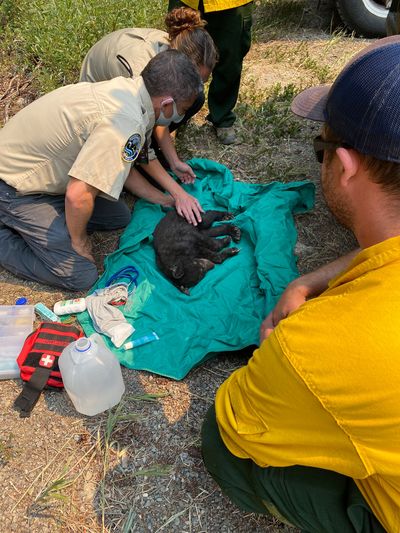Firefighters find burned bear cub in aftermath of the Cedar Creek fire

Fire crews in the Methow Valley came across a sad sight, Monday, a skinny and singed bear cub alone in the woods.
Firefighters working the 35,685 acre Cedar Creek Fire called the Washington Department of Fish and Wildlife. Rich Beausoleil and Lindsay Welfelt, both bear specialists for WDFW, responded and found a female cub which they estimated to be about six months old. The cub weighed 13 pounds, which is low for her age, Welfelt said in an email.
“The cub was still mobile but we were able to capture her by hand and anesthetize her so we could assess the wounds and determine the best course of action,” Welfelt said in the email. “The cub had burns to the face, ears, and paws and had obviously been on its own for several days given how thin she was.”
Welfelt and Beausoleil treated the animal’s wounds and transported the cub to the PAWS Wildlife Center in Lynwood, Wash.
If all goes well, Welfelt said, the animal will be released back into the wild next year.
The bear is just one example of how this summer’s wildfire are impacting wildlife, either by directly killing them or burning their homes.
The full impact of this summer won’t be known until fire season is over and many species and habitats are still recovering from last year’s wildfire season that burned 802,000 acres throughout Washington, including roughly one-half million acres of sensitive shrub-steppe habitat.
“Fires all over the region are impacting wildlife directly through severe burns or death, or indirectly through displacement and loss of habitat that may not recover for decades,” Welfelt said.
“The case of this bear is one example where we can help, but the overall impact to the habitat and wildlife will be difficult to measure.”